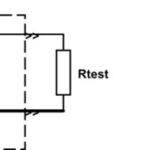A parked regeneration is a crucial process for maintaining the Diesel Particulate Filter (DPF) in your Volvo truck. However, it doesn’t always go smoothly. If your Volvo truck won’t regen, this guide outlines three key steps to troubleshoot the issue and get you back on the road.
1. Verify Safety Requirements
Before initiating a parked regeneration, your Volvo truck needs to meet specific safety criteria. While the owner’s manual outlines general precautions like clear surroundings, there are critical computer-monitored conditions to consider.
The most important factor is coolant temperature. Ensure your coolant reaches at least 160 degrees Fahrenheit. This allows the system to safely elevate exhaust temperatures for effective regeneration. Optimal operating conditions are generally achieved after the engine reaches normal operating temperature. Additionally, confirm the truck is in neutral and the parking brake is engaged. The computer monitors these safety mechanisms, and sometimes cycling them can help ensure proper registration.
2. Diagnose Fault Codes
If safety checks are met but your Volvo truck still won’t regen, check for fault codes. Numerous faults, particularly those related to the regeneration process, can prevent a successful parked regen. Use a diagnostic tool to retrieve detailed information about the codes, going beyond basic descriptions.
Understanding the specific fault code empowers you to address the root cause, whether it’s a simple repair or requires professional mechanic intervention. A comprehensive diagnostic tool can save valuable time and pinpoint the issue accurately.
3. Consider Advanced Tools for Forced Regeneration
Even after addressing safety and fault codes, high soot levels or lingering cleared codes might hinder regeneration. In such cases, a more advanced tool capable of forced regeneration or code removal may be necessary.
These tools, ranging from laptop software (like Paccar Davie, Texa, Jpro) to handheld devices (such as Snap On, Nexiq) and mobile apps (like OTR Diagnostics), offer varying functionalities and price points. Research the options available to determine the best fit for your needs and budget. Consider factors like ease of use, capabilities, and associated costs (entry fees, annual renewals).
A parked regeneration is vital for your Volvo truck’s DPF health and performance. By systematically addressing safety, fault codes, and utilizing advanced tools when necessary, you can overcome regeneration challenges and ensure your truck operates efficiently.

